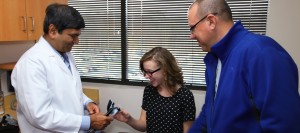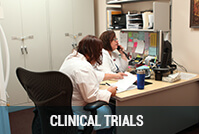Snoring Child
Ten things to keep in mind for your snoring child:

The snoring child may have sleep apnea. Here are some things to consider if your child snores.
1. Snoring is not normal in children. If your child snores, this may suggest sleep apnea, which means stopping breathing in sleep. This can lead to high blood pressure, hyperactivity, learning difficulties, attention deficit, poor sleep, or daytime sleepiness.
2. Tonsils and adenoids should not be removed for simple snoring. Tonsillectomy carries a small but definite risk of severe bleeding. Large tonsils often become normal in size as the child gets older. On the other hand, a child with sleep apnea and large tonsils should have the tonsils removed. This often (but not always) takes care of the sleep apnea, at least until teenage years or adulthood.
3. If your child snores and has other sleep or attention problems, then sleep testing, for sleep apnea, is a good idea. Other problems to look for in the snoring child are poor sleep, sleepiness, attention deficit, learning problems, or high blood pressure,
4. Children with sleep apnea can and do tolerate CPAP well. We have child patients who faithfully use their CPAP machine. If the child does not have large tonsils, or if removing the tonsils does not get rid of sleep apnea, then CPAP is the way to go.
5. If the child with sleep apnea has large tonsils, then removing the tonsils is the first treatment. Removing the tonsils and adenoids often (but not always) takes care of the sleep apnea.
6. After surgery, the child should have repeat sleep testing, as tonsillectomy often does not take care of the sleep apnea. Tonsillectomy may get rid of the snoring, but sleep apnea may persist. Repeat sleep testing will show if it is gone or persists. If it persists, further treatment is necessary.
7. If sleep testing does not show evidence of sleep apnea, then the snoring does not need treatment, even if the tonsils are large. Tonsils often decrease in size, as the young child grows older, and may be normal in size by teenage years.
8. If sleep apnea in the child is very mild, treatment may not be needed. Often very mild sleep apnea will get better on its own with age. As the young child grows older, tonsils decrease in size and the lower jaw grows larger. These changes with age may get rid of the sleep apnea.
9. In the older or teenage child, sleep apnea is like adult sleep apnea. It may be related to weight. Removing tonsils at this age will usually not get rid of the sleep apnea. CPAP is often the best treatment at this age.
10. If the child’s sleep apnea is controlled with treatment, but sleep problems or attention problems persist, these should be further evaluated and treated. Disorders of sleepiness such as narcolepsy or idiopathic hypersomnia often begin in childhood. Attention deficit (ADD or ADHD) always begins in childhood. Even in the child with sleep apnea, these disorders may or may not be related to the sleep apnea, and may not improve with treatment of sleep apnea. These disorders can be accurately diagnosed. They can be effectively treated with medicines.









